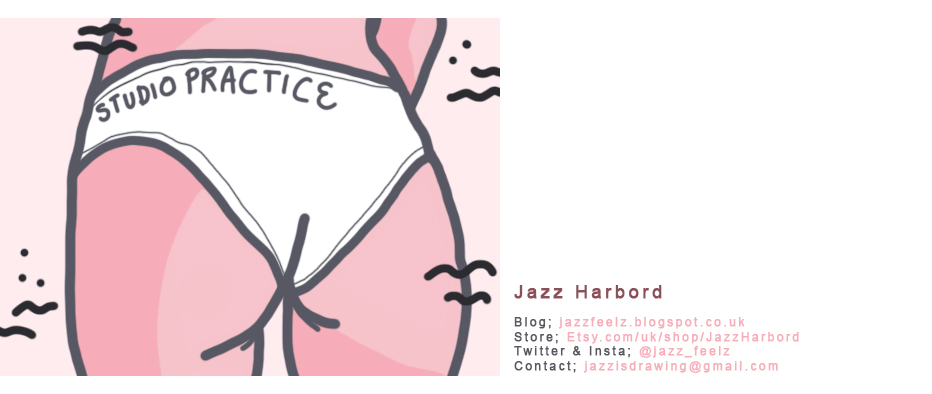CHVRCHES Process & Final
Once scanned I began the process of digitally colouring this piece using a set of downloadable custom brushes in photoshop. I didn't want the piece to loose it's hand-rendered quality despite being highly manipulated in photoshop, because of this I chose to use these customised 'paint brush stroke' brushes in the colouring process of this piece.
The bright colours and marks made with these brushes also helped to elevate the level of energy in the piece and make it feel a lot more 'dancey'. While colouring I did feel at one point however the piece was starting to become over crowded // loose it's focus on the central figure. With some more research looking back at previous CHVRCHES covers I had the idea of using an overlay of the silhouette of the figure to give the piece some depth and draw attention back to the figure through the slightly manic background. It was integral that I continued to listen to the song and look back at past research in order to keep the focus and intention of this piece from start to end; something to consider with each of these sleeves!
Tame Impala
Intention
Create a sleeve that is fun
Slightly nostalgic?
Focus from lyrics
Playful
Initial Sketches & Research
After listening to this song and reading through the lyrics, I decided I wanted the focus of this sleeve to be the woman sang about throughout the track. The idea of subtly referenceing the lyrics through a 'Trevor' tattoo or something appealed to me, I wanted the image to be a little tongue in cheek and not too serious.
Another big influence on the way I tackled this track was the music video which had recently been released for this song. The slight nod at nostalgic motifs and shape driven imagery would go on to impact the way I drew my images.
I began by looking at women's lingerie models for a sexy but not provocative reference point, then moving onto pin up girls to get that kind of tongue in cheek character // gesture.
After drawing through a few variations I decided that one of my earlier pieces felt the strongest and fit best with the track. Stylistically I wasn't sure on the first attempt however, so went through a few more variations until I found one I felt happy with. The shape driven aspect of this piece felt right with the track but there were slight imperfections in terms of proportions//layout.
I wanted this piece to be almost completely analog and so used an approach similar to that of the Caitlin Moran brief in which I scanned in the sketch, edited it so it fit the format // proportions were correct, then printed it out to trace over with pencil crayons on a light box.
Coloured pencils allowed me to get vibrant colours while giving me some texture to work with.
Final Image & Mock Up
Once the final image was drawn out and scanned in I made a few slight alterations in photoshop, mainly to get the colours as bold as I could with the CMYK format, and make sure the contrast and sharpness was optimised. It was important to not over edit this piece however as I didn't want to loose the hand-rendered textures of the coloured pencils, that I feel helped give this piece part of its charm.















